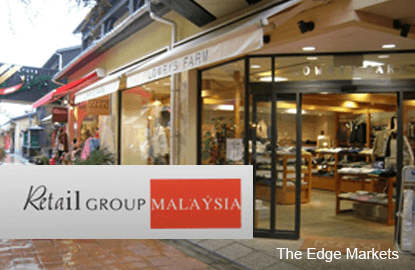
KUALA LUMPUR (March 23): Malaysian retailers are not too optimistic on the growth for the sector in the first quarter of this year and expect a negative year-on-year growth of 0.4%, according to an industry report compiled by Retail Group Malaysia (RGM).
The Malaysian retail industry grew a paltry 1.4% last year, the worst performance since 2001, the report said.
On a quarterly basis, RGM said retail sales growth was 1.3% in the fourth quarter of last year, similar to the dismal negative 0.8% a year earlier.
In the report released today, RGM said the fourth quarter of 2015 performance met the expectation of Malaysia Retailers Association (MRA) members, which projected a growth rate of 1.3% in December 2015, but below the estimated growth rate of 3.8% calculated by RGM.
The report highlighted that the year-end school holiday and festive season did not lift the buying spirit of Malaysian consumers; while the higher cost of overseas travel and the weak ringgit had not encouraged more domestic spending.
Conversely, it said the weak ringgit performance during the last quarter of 2015 had resulted in higher import costs, which led to increased retail prices, which in turn caused further deteriorating of the purchasing power of Malaysian consumers.
Besides, despite heavy price discounts and aggressive promotions, retailers could not raise consumers' spending. Indeed, during this latest quarter, retailers suffered further decline in profit margin growth.
Meanwhile, the total retail sales turnover for 2015 was RM 96.2 billion, having grown only 1.4%. This was below the estimate made by Retail Group Malaysia at 2.0% in December 2015.
“This was also the worst annual growth since 2010. In 2009, the retail industry growth rate was 0.8%,” it said.
However, RGM maintains its forecast of 4% growth rate for the Malaysian retail industry in 2016.
“Projected first quarter growth rate by MRA members at -0.4% is realistic with consideration of higher pre-goods and service tax sales during the same period a year ago, as well as the weak Chinese New Year sales in February 2016,” it said.
It added that despite low fuel prices, the weak ringgit has led to higher prices of raw materials, semi-finished goods and finished goods that are meant for final consumption by Malaysians.
“Prices of retail goods and services have been increasing gradually since the beginning of this year. This has further deteriorated the spending power of Malaysian consumers,” it highlighted.
The report also noted that the recent higher retrenchment rate in the country from key economic sectors (including manufacturing, finance, insurance, as well as oil and gas industries) may slow down the growth of the Malaysian retail industry further.
Moreover, the removal of subsidy on 25kg-bag of wheat flour from March 1, 2016 and the large increase of foreign worker levy for all key economic sectors (especially the agriculture, manufacturing and construction sectors) from March 18, 2016 may lead to another round of price increases of retail goods and services in the near future.
The report also opined that the 3% cut in employees' employees provident fund (EPF) contribution from March 2016 is not expected to contribute significantly to overall retail sales in 2016.